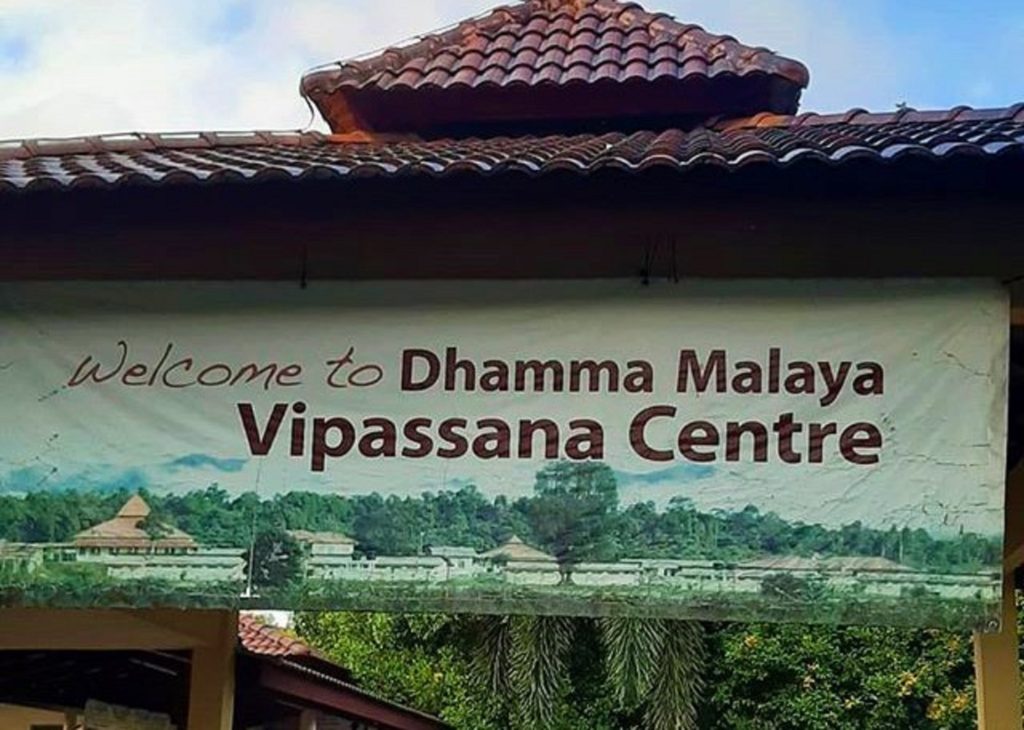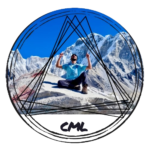How did it all start?
I’m not sure when I heard about the 10-day Vipassana retreat for the first time. It must have been while doing some research on meditation. I know though when it was the first time I meditated. It was back in 2013, which happened to be the year when I attended to my first yoga class. I was living and studying in Granada and I decided to give a try to an ancient discipline which, apparently, was good not just for Eastern but also for Western people.
At the end of every class, we would spend around 15 minutes meditating. That was my first taste of meditation. Time passed but my interest in yoga and meditation remained. At the end of September 2018, I left Australia and got ready for my first-ever solo trip. I met two girls in Indonesia who had some connection with Vipassana. The first one, Luna, had already did it in India. The second one, Andreina, was about to do it. I also met a French man while diving in Komodo National Park who told me how the Vipassana retreat he did some years ago had changed his life.
All these conversations with “strangers” brought back some memories and I started doing some research. I felt like doing the retreat while travelling would be a good experience. The problem? All the places I checked were already full. Vipassana had become so popular that, in order to attend to a 10-day course, you needed to register a couple of months in advance. So, I decided to keep going with my trip… but I didn’t forget about it.
Latest news after my 3-month solo trip
After the 3-month solo trip I went back to my village, Valdepeñas de Jaén, in the south of Spain. I spent one year there and, among many things like starting this blog and (trying to) learn how to play guitar, I also did some more research on meditation and even tried to meditate daily in my room. I tried different things like guided meditation through apps, listening to some relaxing music and/or just trying to meditate alone, without any “digital” distractions. Before leaving my place I “managed” to meditate 1 hour every morning. But, of course, my mind was wandering most of the time.
I’m writing this post in a hostel in Osaka, Japan. I’ve been here for a week. You might be wondering what I am doing here and, don’t worry, you’ll find out soon enough. Before arriving in Japan though, I spent 3 weeks in Malaysia. The first week was pure holidays. I went to Langkawi (where I finally went back diving) and to Penang. I enjoyed my time in both islands and met very nice people. What about the other 2 weeks? Bingo! I went to a 10-day Vipassana retreat and, after coming out of it alive, I felt like I needed to share my experience with you all. So, here we go!
What’s Vipassana?
Vipassana is a particular type of meditation where the goal is to become aware of reality. Once you are aware of it, you try to accept it as it is, not as you would like it to be. To do that, first you focus on your breath. You become aware of your breath but you don’t force it so it become deeper or slower. You don’t count the number of breaths or imagine any particular object, but just focus on the current breath. That “simple” practice, little by little, will help you getting your mind focused and calm.
Once you achieve that, you can start scanning your body, trying to feel whichever sensations you happen to have at that particular moment. The final goal? To become aware and equanimous so you realise something is happening in your body (through an interaction between your mind and the outside world) but you don’t react to it. It might sound simple and easy but, I can tell you it is not lol. This is a very brief description of the Vipassana technique. Vipassana is just a type of meditation, but there are quite a few out there, just as there are quite a few yoga techniques.
How, where and when can you join a Vipassana retreat?
Vipassana is offered in a 10-day course which takes place in many countries around the world. The course is “free”, meaning, you don’t have to pay a fee. But, once you finish it, you can give a donation, depending on your economical situation and on how you felt about the course itself. Depending on the country you choose to do it, there will be courses happening more or less often.
When I tried to register for it in either the Philippines or Indonesia, I found out that there were huge waiting lists. So, best thing is to take a look at the meditation center where you want to go, see the available dates and apply as soon as available. Otherwise you risk to have to wait another couple of months. To find more info about the technique, the retreat, the locations and the dates, please, take a look at this website.
Vipassana, Day 0
So, back to my 10-day Vipassana retreat experience, since I knew I was going to Japan at the end of February, I figured I could spend sometime in Malaysia beforehand. Thus, I registered 2 months in advance (when the application process opened) for the 10-day Vipassana course that was happening from February the 12th till the 23rd. The location was somewhere 3 hours east of Kuala Lumpur and you could choose to drive there yourself or to pay for a bus ride. I chose the second option and, on February the 12th at 10:00, the “Vipassana” bus left KL and drove plenty of nervous and scared human beings towards their destiny.
Most of the people in the bus didn’t know anybody, except for a couple and maybe some friends. We were all strangers. I didn’t talk to anyone until we stopped to have lunch. Not because I didn’t want to or feel like but because I chose one of the few single seats in the bus lol. I joined a girl who was eating alone and we spoke for a while. Her name was Anna and she was from Kazakhstan. She was one of the first people I’ve ever met from Kazakhstan and that wasn’t all, she could speak Spanish and knew about a TV series broadcasted in Spain some years ago lol.
She had been working in Barcelona for a couple of months but she had studied Spanish on her own. Her English was super good and she had been working the last years as a yoga teacher in different countries in Southeast Asia. So, as you can see (or read), she was not an office girl. She was kind and I enjoyed talking to her. Again, one of the best things of travelling: meeting interesting people who make you feel the world is something else than getting a job, working and dying.
After her, I met another interesting person, this time it was a guy, his name was Diego and he was coming from Uruguay. We didn’t have time to speak much because the bus was already leaving but, we would speak later on at the center, before and after the retreat.
After 3 hours or so we arrived at Dhamma Malaya Vipassana Centre, aka our home for the next 11 days. We picked our stuff and went to the dining hall where some volunteers would helped us out with the registration process. Before that though, they checked our temperature and asked us to fill out a health form stating the truth about our current health. Corona virus was starting to spread around the world and they needed to make sure we were alright. After that, we had to hand our wallet, passport, cellphone and other entertainment devices like books, computers, music players, etc. Yes, for 10 days you won’t be able to use your phone or any other distraction. Already feeling like leaving? Lol.
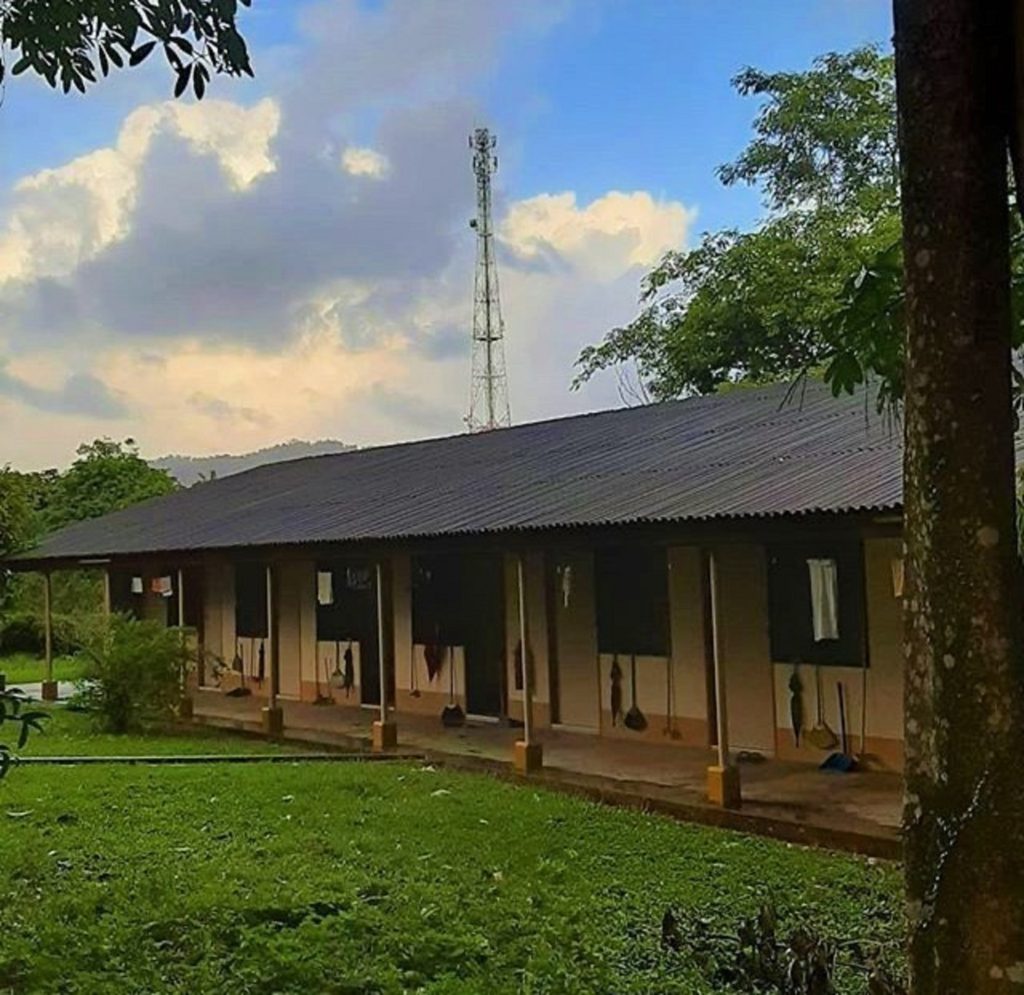
Then, they gave us a number which was the one of our room and told us to be back at 18:00 for a light dinner. I went to my room (P8), did some cleaning and set it up for the next 10 days and, after a shower, went for a walk around to try to become familiar with the center. The center was located a few km away from the highway and it was amazing. It seemed we were in the middle of the jungle. There were huge trees, palm trees, a big river and plenty of animals such as lizards, monkeys, squirrels and even toucans!
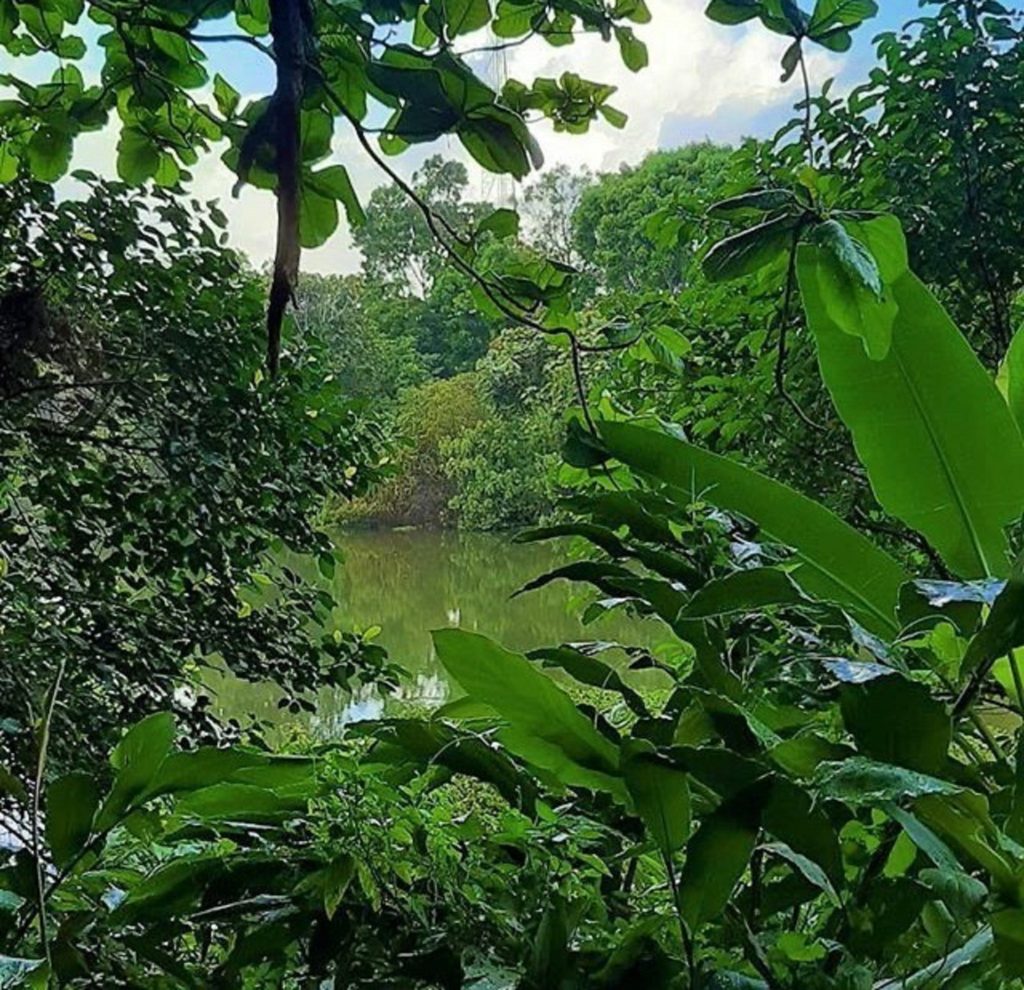
The center was divided in two, because, from the first till the last day, segregation was taking place. Women on one side and men on another. There was a kitchen to serve both genders and then two dining halls, two sets of rooms, a small meditation hall and a big one. The last one was the place where some meditation sessions were taking place, depending on the time and day. Other sessions could be done in our room. It was up to us.
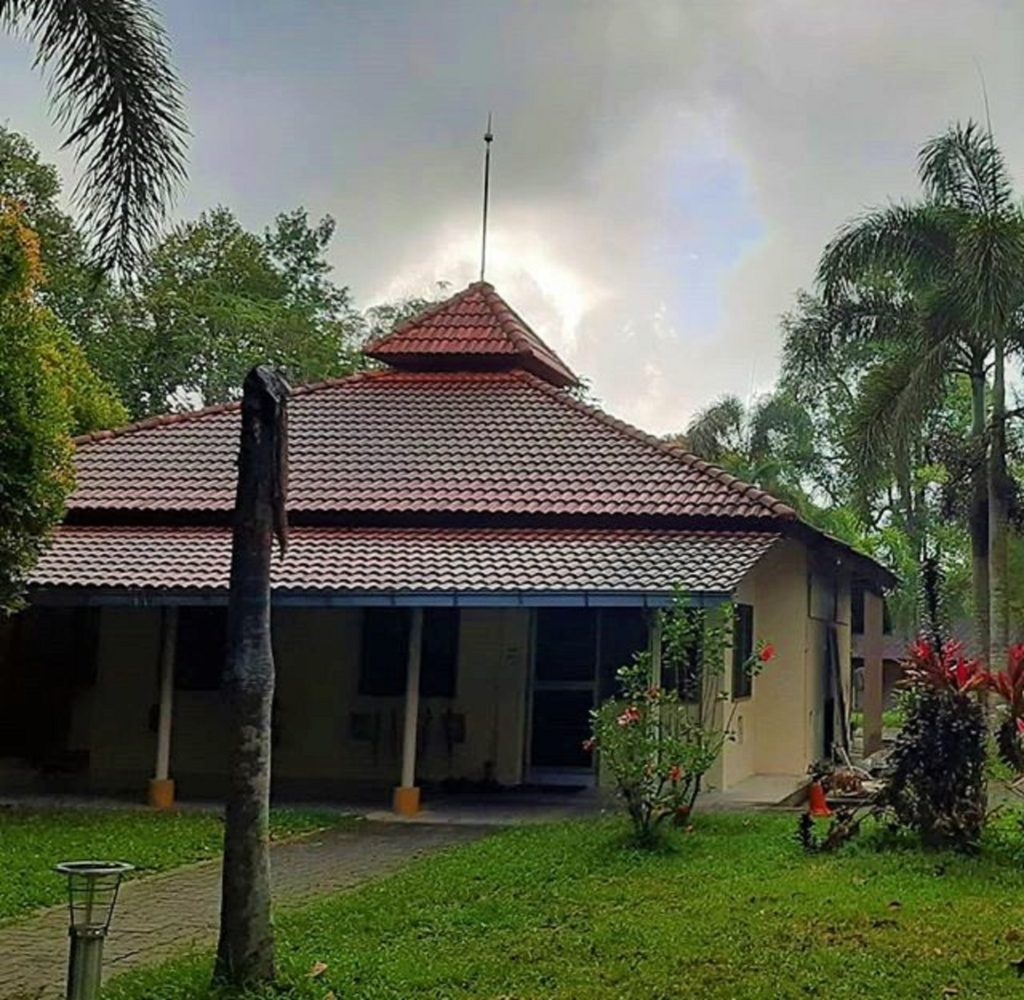
Before dinner I saw Diego again and we spoke for a while. He had left Uruguay sometime ago and went to NZ with the Working Holiday Visa. After that, he got a season job in a winery and he was going back to NZ in a few weeks. Before and after the retreat he would be travelling. So, something similar to what I was doing. The dinning hall had been numbered with the numbers of our room. Sitting next to me there was a local Malay guy. His name was Viky and he was very kind. He was about to finish college and then he wanted to create his own business. Remember you have to hire us once you get your business running!
After the light dinner, they gave us some information about the retreat. I already knew most of the stuff they told us because I had done my homework and read all the information provided in the several emails they sent us. Basically, we were asked not to leave the retreat before the course came to an end and not to speak to anyone during the course (as well as to avoid eye contact) and respect the “noble silence”. You could speak just to the teachers (at the time available for questions) and to the volunteers in case you had some problems with the food, bedroom, etc.
At 20:00 we had a meditation session at the meditation hall. They gave numbers to each one of us so we just needed to look for the number on the floor and sat down there. That cushion would be my meditation place within the hall for the next 10 days. Once the session was over, everyone went to their rooms, ready for Day 1. The schedule for the next 10 days would be similar to this:
- 04:00, the gong starts ringing, get ready for the first meditation session.
- 04:30-06:30, meditate at the hall or in your room.
- 06:30-07:15, breakfast is served.
- 08:00-09:00, meditate at the hall.
- 09:00-11:00, meditate at the hall or in your room, depending on the instructions given.
- 11:00-12:00, lunch is served.
- 12:00-13:00, rest and interviews with teachers.
- 13:00-14:30, meditate at the hall or in your room.
- 14:30-15:30, meditate at the hall.
- 15:30-17:00, meditate at the hall or in your room.
- 17:00-18:00, tea break.
- 18:00-19:00, meditate at the hall.
- 19:00-20:15, discourse at the hall.
- 20:15-21:00, meditate at the hall.
- 21:00-21:30, question time at the hall.
- 21:30, lights out, retire to your room.
Not bad huh? 🙂
Vipassana, Day 1
I didn’t sleep much. I’m not used to wake up at 04:00 plus I wasn’t waking up just to go on a excursion, see the sunrise or something like that. I was walking up to go to a meditation hall in the middle of the “jungle”. And I wouldn’t be able to speak to anyone. Nonetheless, after getting dressed, I walked to the meditation hall with confidence, feeling “ready”. The light was dim and some of the fans were on. The whole atmosphere felt nice. I did my best to avoid any eye contact. I walked straight to my cushion and sat down, waiting for indications. But, there were none. Instead, there was a chanting from S.N. Goenka, the guy who started it all. I felt his chanting was kind of funny and lacked melody and rhythm but, little by little, I would get used to it.
Throughout the following 2 hours my mind wandered a lot. It went from memories from the past to dreams in the future. It was very untamed and wild, but that was something I already knew. In fact, one of the reasons why I decided to take the 10-day Vipassana course was to try to work on that. I tried not to change my posture much and I didn’t open the eyes until the gong announced the end of the two hours. Not sure how but I managed to do it.
After that I walked to the dining hall to have breakfast. I wasn’t very hungry though so I didn’t eat much. I went back to my room and put some cream on. Yes, once again I had been bitten quite a lot by mosquitoes. Every time I travel in Southeast Asia they have a feast in my honour. It was painful and annoying but I felt that somehow, that too was part of the retreat. It was a way to train my mind. The 08:00-09:00 meditation session was really hard. My mind was drifting so much I couldn’t focus on my breath at all. That led to several situations where I almost fell asleep. I did my best to control it but I couldn’t. I was struggling a lot and was hoping for the hour to finish and, eventually, my dream came true.
Once the mandatory hour at the hall was over, they let us choose between meditating there or in our room. I decided to go to my room and it turned out to be a good choice. The room was cooler (the feeling of heat didn’t help me staying awake) and I felt I did better than at the hall. Again, I meditated for 2 hours, from 09:00-11:00. After that it was lunch time. The food (vegetarian Malay) was pretty good. Throughout the whole 10 days we would be eating vegetarian food. That’s how it works in every Vipassana center. For me it wasn’t a big deal though: I’m used to eat vegetarian food and I love Southeast Asia’s cuisine.
Since we had some free time until 13:00, I decided to take a nap. Once again, it turned out to be a right decision. I felt much better after it. When the gong woke me up, I decided to stay in my room and meditate there. The time frame was from 13:00 to 14:30. It went more or less alright and, after that, we were appointed at the meditation hall for another hour. The fun didn’t stop lol.
During that hour, we were given some instructions. We needed to focus on the breath (without changing it on purpose). The mind would wander, but that’s just normal. After all, we never tried to tame it before. We needed to realise if we could bring the mind back to the breath within 5 minutes. If not, it was still ok because, again, we were not used to control our mind and try to focus on something. It wasn’t easy at all.
One thing is knowing your mind might not be very tamed and another thing is realising how crazy it is. After the instructions and the one hour of meditation, they let us choose again between staying at the hall or going to our room. I decided to stay there and fought until 17:00, when the gong encouraged us to go have the tea break. It was a strong battle where, 95% of the time, my mind won.
The tea break was good. There was some fruit and tea and… that was all the food until breakfast next day lol. Yes, you guessed it right, during 10 days you won’t have a “proper” dinner. Isn’t it amazing? After 10 days you will have a fit body and a fit mind… if you make it alive… just kidding! During the tea break I felt my upper back and knees were hurting a lot. But I wasn’t the only one. I could see (and hear) people stretching throughout the meditation sessions at the hall. We were all in the same boat after all.
After the tea break, we went back to the hall for the last mandatory meditation hour and, after that, the best part of the day came: a video from S.N. Goenka where he gave us some explanations on why we had to do what we just had been doing for the whole day. He was (unfortunately he already passed away) a great speaker and he made plenty of jokes, which honestly helped at that time of the day. Among the highlights of his speech:
- Focus on the air coming in and out of your nostrils. Don’t change the natural pace of your breath.
- Don’t use words or images to calm the mind through the breath. It will make it easier but, at the same time, you risk to forget about the breath itself.
- The suffering comes from the tagging of the mind on the objects and situations from the outside world. If they are pleasant, we crave for them and want more and more. If they are unpleasant, we generate aversion and try to run away from them.
- The mind is sick and ignorant. It never stays in the present but just follows a stream of unconnected thoughts.
- During the 10-day Vipassana retreat we will be conducting an operation in our mind. We are the surgeons and we have no anaesthesia. Follow the rules of the hospital (the rules of the retreat) and don’t be surprised if it hurts. After all, all the difficult and deep operations hurt.
- The point of the noble silence is to avoid feeding the mind with extra thoughts which would come after talking to other people. Every word or gesture can become food for the mind.
- The smaller the point of focus, the sharper the mind becomes.
- Once the video came to an end, we meditated for around 45 minutes and, after that, I went straight to bed lol. The first day had been pretty tough but I managed to make it alive and I went to bed with a smile on my face.
Vipassana, Day 2
I slept better and after the gong went off at 04:00, headed for the meditation hall for the first 2 meditation hours of the day. The first 45 minutes or so went pretty good. After that though, it was hell. My mind went from one thought to another relentlessly. Because I lost the focus on the breath, I started to feel more and more the pain on my knees and back. Little by little the snowball was becoming bigger and bigger and my mind was more and more focused on the pain and… in the end… the gong came to rescue me lol.
The food was delicious. For breakfast I had noodles with mushroom, tofu and coriander. There was a volunteer who was toasting some bread and, next to it, there were different dressing like peanut butter, butter and jam. There was also fruit, yogurt, biscuits and some sort of soup or broth. So, as you can see, the menu was varied enough. After breakfast I decided to take a short nap and, from there, I walked to the meditation hall for the 08:00-09:00 meditation session.
The hour went on pretty alright. I realised that the more I focused on the breath, the less I felt the pain on my body. I then decided to stay at the hall for the next 2 hours. The first part went well again. I could feel the air coming in and out of my nostrils and I could even feel its subtle touch on the upper lip and nose.
The second part though was a little harder. I started to lose focus again and, as I was thinking and thinking, the gong showed me the way to the lunch break.I guess it is nothing new at this point but the food was again delicious, specially the yellow rice with corn and lemon grass . Then I decided to repeat what I had done on Day 1 and, after taking a nap, meditated in my room for 1 hour and 15 minutes.
That session was alright, even if I felt kind of dozy after waking up. Then we were called at the hall and I felt the difference in temperature: it was hotter there than in my room. You could feel (and hear) that people were uneasy and that led to a drop in my level of concentration. I survived though and decided to stay for the next session at the hall, even if it was harder. I felt that was the way to improve.
The first part of the session was alright but the last 20 minutes or so felt like weeks. I was wondering when my favourite hero (the gong) would come rescue me and, like always, he showed up right on time. I realised there was another type of tea that day. It was chrysanthemum tea and it was delicious. I then decided to do some stretches in my room and, after a shower and another meditation hour, it was time for the video. These were the highlights:
- The mind is like a wild elephant or a monkey, jumping from one branch to another without rest. Wild elephants were our enemies back in the day, but, after taming them, they became great allys. The same way, depending on how much we tame it, the mind can become our worst enemy or our greatest ally.
- If the body is weak we work out to train it and get it fitter. We can do the same with the mind but we can’t expect to get it fit in a couple of days, taking into account we have never trained it before.
- It doesn’t matter how much you read on the topic or how many videos you watch. I can explain the way from Valdepeñas to Granada to many people. I can provide as many details as possible. Yet, some will get lost. Some will get there sooner than others. There is just one way to our goal: to follow the path ourselves.
- The world itself is not rotten. What’s rotten is human beings’ minds. A healthy mind can’t think of killing. You need to have generated a lot of aversion and negative thoughts before even having a single killing thought.
- There are many types of sensations in our body: cold, heat, dryness, moisture, tickling, etc. They are always there, since the body is always undertaking chemical reactions. We are not aware of them because we never paid attention to them.
- We just need to focus the mind on the small triangle between the upper lip and the nose. If there are sensations, we feel them. If not, back to the breath.
- Even if I had been awake for around 16 hours, I felt my mind was pretty focused throughout the whole video. I felt I was really paying attention to what S.N. Goenka was saying.
Vipassana, Day 3
I guess by now you know what happened at 04:00 right? Bingo! The gong went off yet once again. Day 3 was just starting! The first hour out of the two was alright. Like always, I meditated at the hall. Then, as S.N. Goenka started singing (his voice was recorded and being played) I started to lose focus and had a strong craving for him to finish. The singing was always going on for 30 minutes and, back then, those 30 minutes felt like hours. But, since everything has a beginning and an end, that moment eventually also passed.
Breakfast was good as always. It was a weird feeling, eating without talking to anyone. Sitting next to people and not looking at them. I would just focus on the food in front of me and eat little by little, trying to be mindful of what I was doing in the present moment. It was a weird situation that had been going on ever since the course started and that would still go on for many more days. That being said, I felt I was dealing with it in a pretty good way.
I decided not to take a short nap after breakfast but to do some stretches in my room and then go for a walk. It was at that time, as I was walking around the jungle, that I saw two toucans. The first ones of my life! They were amazing and I felt really happy and blessed to have been at the right place at the right time.
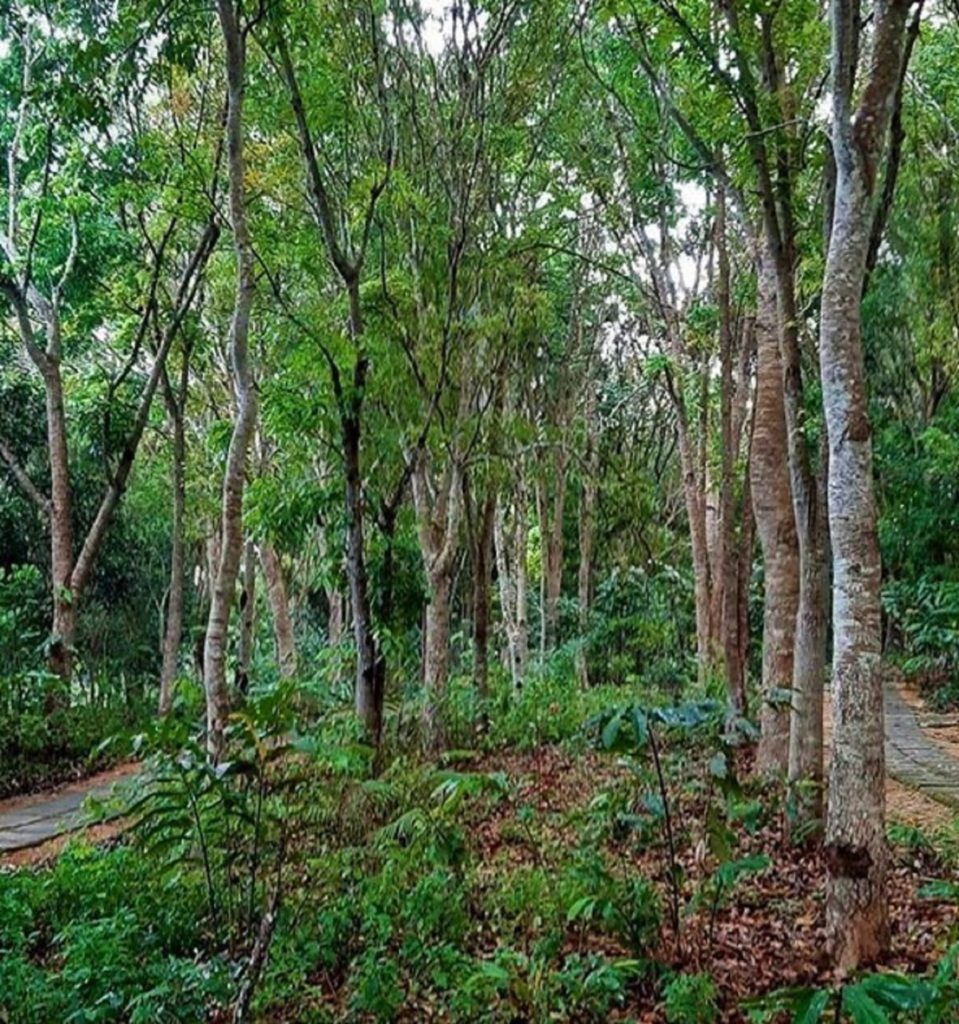
Not sure if it was because I didn’t take the nap but the meditation session from 08:00 to 09:00 was the most difficult so far. I couldn’t focus at all and I was feeling really sleepy. It was an exhausting effort just trying not to fall asleep. I “woke up” several times, realising I was on the verge of surrendering to Morpheus. Thinking back, I realised I had the same problem on Day 1, which was also the day when I didn’t take a nap but did some exercise. So, I decided that, from now on, I wouldn’t do any exercise but, instead, I would take a short nap.
My struggling was becoming unbearable until, finally, the gong rang yet once again. The teacher asked if we could feel something in the small triangle between the upper lip and the nose. I had briefly felt something just a couple of times. I decided to spend the next 2 hours at the hall and it turned out to be a good decision. After the strenuous fight against Morpheus, I felt much better and I was really focused. Because of that, I was able to feel different sensations (itching, sweat, tickling, etc) several times. At some stage, my mind was so focused that I started to feel sensations on my hands and arms. It was an amazing feeling.
After lunch and nap, I decided to stay in my room (like I had been doing so far) and, again, I managed to get my mind focused. I felt different sensations at different times. From 14:30 to 15:30 the situation changed completely. My mind wasn’t focused at all. In fact, it was so bad that it started singing “Llamada de emergencia”. I hate reggaeton! But I laughed at the fact that the song that came to my mind was “emergency call”, which perfectly fitted with the current situation lol.
The second hell of the day eventually came to an end and, after that, we were asked to stay at the hall from 15:30 to 17:00. It wasn’t the best or the worst. It was a mix from my mind wandering to feeling some sensations. Tea break was a great relief and, after cleaning the room (something I would be doing everyday throughout the course at the same time) and taking a shower, I went to the hall to meditate yet once again. By the way, I felt like cleaning the room and taking a shower every day at the same time was a good way to “relax” myself and have my mind focused on some “tasks” other than the breath. I got the following highlights from the discourse of Day 3:
- The only way of learning is through practice. I know I’m not revealing anything new here but that is something that we should remind ourselves more often. And not just remind, but act on it!
- Everything is always changing. That’s why attachments don’t make much sense.
- Manuel, a guy from Portugal I met in Langkawi who had already took the 10-day Vipassana course, advised me to use extra cushions so I would have 3 points of contact with the floor, rather than 2. I tried it and… it helped my knees but not my butt. So, I guess that eventually we all have to deal with whichever posture we choose because all of them we’ll be painful.
So, I had been in the retreat for 3 days and so far so good. I was still alive and, while my mind was wandering a lot, I also had some peaceful and quiet moments. I felt like I was dealing with segregation, noble silence and the time table in a pretty good way. What do you think about my first 3 days? Have you already tried attending a 10-day Vipassana retreat? What was your experience? Do you know what’s coming on Day 4? Let me know in the comments below!
